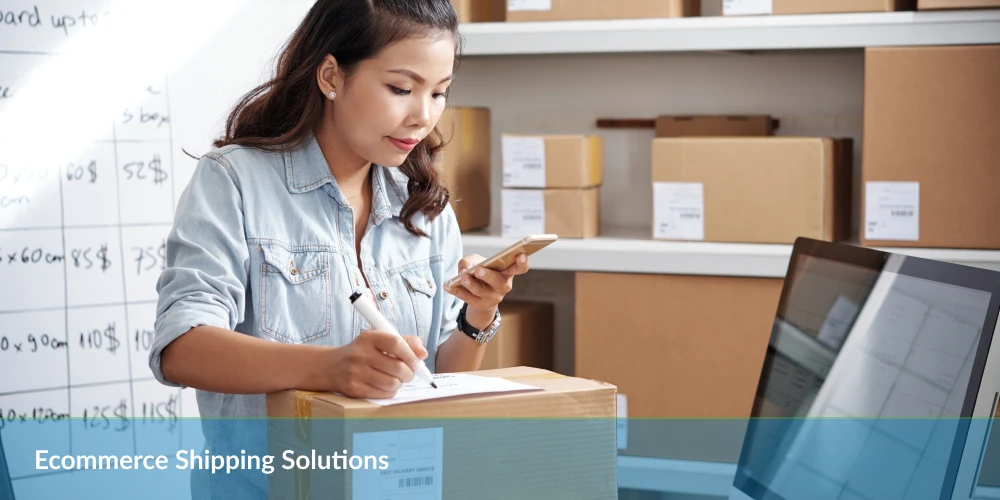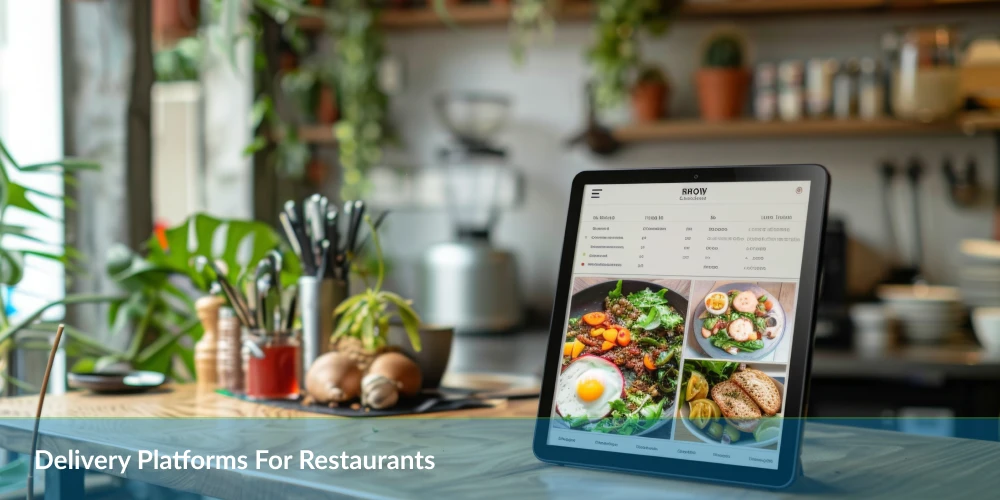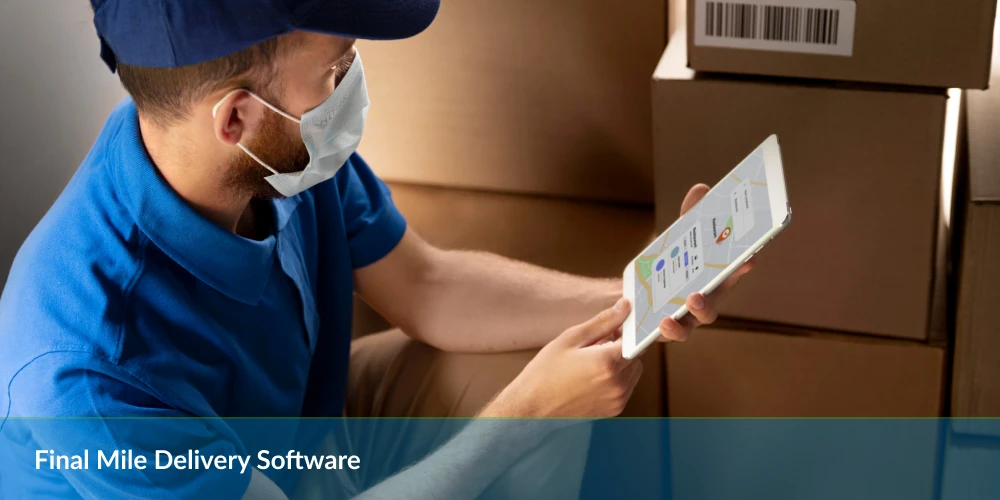Table of Contents
In 2024, global retail e-commerce sales were estimated at six trillion U.S. dollars, with projections forecasting a 31% increase, reaching nearly eight trillion dollars by 2028.
Source: Statista Research Department
Slow delivery times, hidden fees, and inconsistent fulfillment wreak havoc on an online store’s reputation. In today’s competitive landscape, streamlined ecommerce shipping isn’t just a logistical advantage—it directly fuels business growth. Every timely arrival and transparent tracking update build trust; every delay strain customer loyalty.
Shipping does more than move packages. It shapes the customer’s journey from checkout to doorstep, influencing buyer retention and brand perception. A smooth delivery experience encourages repeat purchases, while a confusing or unreliable one drives customers to competitors with more reliable fulfillment.
Marketplace sellers, especially those juggling multiple platforms, face a tangled web of logistics rules, carrier integrations, and inventory management headaches. Scaling becomes difficult without the right shipping stack. From inaccurate delivery estimates to poor packaging standards, inefficiencies in shipping operations cost time, money, and return customers.
So, what separates growing ecommerce brands from stagnant ones? The difference often lies in how well they solve one critical problem: shipping. Let’s explore the solutions that unlock scale and satisfaction.
Defining E-commerce Shipping
E-commerce shipping covers every step in the physical movement of goods from seller to customer. It starts when a customer places an order online and ends when the item is delivered to their doorstep or returned through the reverse logistics process. The scope includes everything from selecting carriers and calculating rates to packaging items and managing transit times. Beyond movement, e-commerce shipping directly impacts customer experience and brand perception.
Key Shipping-Related Terms All Sellers Should Understand
| Shipping Carrier | A company responsible for transporting packages. Examples include UPS, FedEx, DHL, USPS, and local couriers. |
| Shipping Rate | The cost charged by the carrier to move a parcel from origin to destination, based on weight, dimensions, distance, and delivery speed. |
| Tracking Number | A unique identifier assigned to a shipment, enabling real-time tracking for both the seller and customer. |
| Last-Mile Delivery | The final delivery stage is from a distribution center to the customer’s address. It’s often the most expensive and complex part of the process. |
| Zones | Carriers define geographical areas to calculate shipping rates and delivery times based on the distance the package must travel. |
Order Fulfillment
Order fulfillment encompasses the tasks required to get products from inventory into customers’ hands. This includes receiving stock, picking items from shelves, packing them appropriately, creating shipping labels, and coordinating with carriers. Sellers can manage fulfillment in-house, outsource to third-party logistics (3PL) providers, or use marketplace-specific services like Amazon FBA or Walmart Fulfillment Services. Fulfillment accuracy and speed directly influence customer satisfaction and repeat business.
Logistics
Logistics refers to the coordination of complex processes in the supply chain, including freight management, warehousing, shipment routing, and inventory control. While fulfillment deals with single orders, logistics works on a much broader scale. Efficient logistics ensures that sellers can consistently meet shipping promises, optimize costs, and scale operations without disruptions. The use of freight brokers, logistics platforms, and real-time data tracking streamlines this complexity into an executable plan.
Packing
Well-executed packing protects merchandise in transit, meets carrier requirements, and shapes the unboxing experience. Sellers must choose materials based on product fragility, dimensions, and weight, while also considering dimensional weight pricing rules set by carriers. Custom-branded packaging can double as a marketing tactic, while secure, sustainable materials influence customer trust and environmental impact scores. Packing errors often result in damaged items, returns, or customer complaints don’t go unnoticed.
How E-commerce Platforms Interface with Shipping Systems
Modern ecommerce platforms, Shopify, WooCommerce, BigCommerce, and Magento, integrate with shipping technologies via apps or built-in tools. These integrations enable sellers to display real-time carrier rates at checkout, print shipping labels, track packages, and automate notifications. APIs connect storefronts directly to shipping providers, third-party fulfillment centers, and inventory systems. This automation bridges the gap between digital transactions and physical delivery, eliminating manual entry and reducing latency in the order lifecycle.
Shipping Automation Tools: Save Time, Reduce Errors
Manual shipping tasks drain time and invite mistakes. Automating label creation and tracking transforms repetitive, error-prone processes into seamless workflows. With the right software, merchants can auto-generate shipping labels the moment an order is received, pull in address information directly from marketplaces or shopping carts, and update tracking numbers without touching a spreadsheet or inbox.
This eliminates the delays and missteps that come from copy-paste workflows. It also allows businesses to handle spikes in order volume without adding headcount or sacrificing delivery speed.
How Automation Connects with Order Fulfillment
Shipping automation isn’t a side tool, it’s embedded in the broader fulfillment chain. When used properly, it syncs with inventory management, order routing, and carrier selection. Here’s how that looks in action:
- A customer places an order, and the platform flags the optimal warehouse based on proximity or stock levels.
- Shipping software selects the carrier based on rate rules and service performance, then prints the label for that package in a single click or fully hands-free.
- Tracking numbers sync instantly back to the storefront, triggering customer notifications without any manual input.
This level of integration allows sellers to fulfill thousands of orders across multiple channels with minimal staff and virtually no manual entry.
Pro Tip: Integrate shipping automation with your inventory and order management systems to eliminate manual steps and scale effortlessly during peak demand.
Carrier Rate Comparison: Finding the Best Shipping Deals
Shipping rates vary dramatically between carriers and even within the same carrier, based on variables like distance, weight, dimensions, delivery speed, and destination types. Comparing these rates ensures each package ships at the lowest possible cost while still meeting delivery expectations.
For e-commerce businesses shipping hundreds or thousands of parcels per month, even minor savings per shipment create a substantial bottom-line impact. Shippers that regularly evaluate live rates instead of relying on default or negotiated pricing unlock two key benefits:
- Operational efficiency: Automating rate selection eliminates manual quoting and reduces errors.
- Optimal cost control: Dynamic rate shopping ensures the best deal is used, not just the default or most familiar carrier.
How Multi-Carrier Shipping Software Works
Multi-carrier shipping platforms integrate with e-commerce storefronts, marketplaces, and warehouse systems to centralize shipping decisions. They access carriers’ real-time APIs to pull current shipping rates, transit times, and service levels instantly. With this data, the software compares all eligible options and selects the most cost-effective service that meets the merchant’s criteria.
When using tools, the system executes tasks like:
- Fetching carrier rates in real time
- Auto-applying business rules (e.g., prioritize 2-day delivery under $10)
- Printing compliant shipping labels based on the selected carrier
- Updating the order status and sending tracking details to the customer
This end-to-end automation not only saves time; it creates uniformity across channels and reduces the risks associated with manual rate shopping or outdated rate tables.
What to Consider When Comparing Shipping Services
The rate alone tells only part of the story. Several other variables shape the true value of a shipping option. A carrier offering the cheapest rate may also have the highest late delivery rate or lack weekend pickup.
A multi-dimensional view of shipping performance will generate better decisions than comparing sticker prices alone. Want to push margins even further? Combine rate comparison with negotiated contract discounts and regional carrier options for a sharper pricing edge.
Order Fulfillment Strategies: From Click to Doorstep
In-house vs. Third-Party Fulfillment (3PLs)
Order fulfillment begins where the customer journey ends: post-purchase. At this stage, every second matters. Sellers face a strategic decision—whether to manage order fulfillment internally or outsource it to third-party logistics providers (3PLs).
- In-house fulfillment offers control. Sellers oversee receiving, storing, packing, and shipping from their facilities. This setup works efficiently for smaller businesses that manage limited SKUs or want tighter quality management. However, scaling in-house operations requires capital investment in technology, labor, and warehouse space.
- 3PLs eliminate the infrastructure overhead. Companies like ShipBob, Deliverr, and Red Stag Fulfillment specialize in fast, distributed fulfillment networks. According to a 2023 survey by Ware2Go, 66% of merchants report higher cart conversion rates when fast shipping options are offered, and 84% of online shoppers reported that they would never purchase from a brand again after a single negative delivery experience.
Product type, order volume, and expected delivery SLAs determine the better fit. A startup with daily orders in the hundreds might streamline faster with a 3PL. By contrast, a niche seller aiming to personalize packaging at scale may benefit from keeping operations in-house.
Accurate Packing and Inventory’s Role in Fulfillment Efficiency
Fulfillment speed starts at inventory shelving and ends at label application. Accuracy in both inventory and packing is non-negotiable. Every mis-pick or overstock costs time, money, and trust.
- Barcode scanning ensures every item is tracked from shelf to shipping box, minimizing errors.
- Smart packing systems pre-select optimal box sizes, eliminating unnecessary dimensional weight charges.
- Real-time inventory synchronization across sales channels prevents overselling and delayed fulfillment.
Whether using automated conveyors or zoned picking strategies, precision in order handling reduces returns and boosts satisfaction. Amazon’s fulfillment network operates at over 99.9% order accuracy. This performance comes from tight packing validation and synchronized warehouse data.
Want to cut the time between checkout and ship confirmation? Then every scan and step in your fulfillment process must function like clockwork.
Multi-Channel Shipping Integration: Sell Everywhere, Ship from One Hub
Managing sales across platforms like Etsy, Amazon, eBay, and your e-commerce site introduces a web of operational complexity. Each marketplace enforces its service-level agreements, labeling standards, and customer communication expectations. Orders pour in through different portals, yet fulfillment demands uniformity, speed, and accuracy. Without centralized control, the risk of delayed shipments, missed orders, or double shipping increases exponentially.
Marketplace algorithms also reward fulfillment consistency. For example, Amazon’s Buy Box placement heavily factors in shipping performance and lateness rate. eBay’s Top Rated Seller status requires 95% of transactions to be shipped within the stated handling time. Fragmented workflows interfere with meeting these benchmarks, putting visibility and revenue at risk.
One Dashboard, Every Order: Centralized Control
Platforms like ShipStation, ShippingEasy, and Easyship consolidate your storefronts into a single operational dashboard. They instantly sync inbound orders across all channels, aggregating them in one view. Whether a customer buys on Walmart Marketplace at 10 a.m. or completes a Shopify checkout ten minutes later, both orders appear side-by-side, ready for fulfillment using one process.
These platforms also integrate with inventory management systems. If a SKU sells on Etsy, it updates inventory levels across Amazon and your WooCommerce site in real-time. This synchronization prevents overselling, avoids customer disappointment, and eliminates the need to manually reconcile updates across channels.
What Unified Shipping Integration Delivers
- Streamlined logistics: Instead of training teams on different marketplace systems, shipping rules and workflows remain standardized. Label generation, packaging rules, and delivery options follow one operational template.
- Faster fulfillment speeds: With batch labeling, pre-set automation rules, and consolidated pick lists, outbound processing accelerates across the board. A single hub reduces handling time by eliminating platform-specific steps.
- Enhanced visibility: Track metrics across platforms from one analytics dashboard. Evaluate shipping cost per channel, processing time per order, and carrier performance without switching systems.
- Fewer integration errors: Stop using spreadsheets and copy-pasting address data. Automated sync with marketplaces reduces human error and eliminates rework.
International Shipping Options: Going Global Confidently
Expanding into international markets demands more than just currency converters and multilingual websites. Without a well-structured international shipping strategy, global growth stalls and customer trust erodes. Operational readiness makes the difference between a smooth cross-border transaction and a logistical setback. Here’s how to streamline shipping beyond domestic borders.
Simplifying Cross-Border Delivery Logistics
To offer international delivery seamlessly, e-commerce platforms must integrate with carriers offering reliable end-to-end tracking, built-in customs support, and international service networks. Solutions like DHL Express, UPS Worldwide Expedited, and FedEx International Priority provide businesses with customs brokerage, predictable transit times, and tracking visibility from warehouse to doorstep.
Customs, Taxes, and Documentation
Freight isn’t the only element crossing borders; paperwork travels too. Inaccurate or incomplete customs documentation triggers delays, fines, or returns. That’s why e-commerce shipping platforms automate commercial invoice generation and HS code assignment across destinations.
Handling duties and VAT up front transforms the customer experience. DDP (Delivered Duties Paid) shipments eliminate surprise charges at delivery. Services integrate tax calculators and checkout localization, allowing sellers to collect VAT at checkout and remit to regulators directly.
Efficient coordination between inventory data, order management platforms, and international carriers will determine delivery reliability across borders. With streamlined customs compliance, integrated marketplaces, and localized carrier options, global ecommerce becomes not just accessible but consistently profitable.
Branded Shipping and Packaging
Shipping doesn’t end when the parcel leaves the warehouse; in fact, it’s an extension of the brand. For small ecommerce businesses competing in crowded markets, packaging represents a tactile differentiator. Custom-branded packaging transforms a routine delivery into an unboxing experience that deepens connection and boosts retention.
Data backs this up: according to a 2022 Dotcom Distribution study, 40% of consumers said branded packaging makes them more likely to recommend a product, while 61% said it makes them more excited about receiving the package. For a small business, the shipment box becomes a touchpoint just as powerful as digital ads or social media content.
How Presentation Impacts Perceived Value and Trust
First impressions aren’t reserved for websites. Packaging sets the tone before the customer touches the product. A professional, cohesive presentation signals reliability. It tells the buyer, “This brand values the purchase as much as I do.”
Premium packaging influences price perception. Research by Ipsos shows that 72% of consumers say packaging design can influence their purchasing decisions. A well-designed box elevates a $30 item to feel like a $60 product without changing the product inside.
Trust follows aesthetics. Clean branding, secure packaging, and a thoughtful arrangement inside the box reassure customers. They receive what they expected—sometimes more. This translates into repeat business, user-generated content, and organic promotion through social sharing. In fact, according to WSI, Instagram rolled out this cool shopping feature for Stories, aiming to broaden its e-commerce push..
Returns Management Systems: Make Returns Easy for All
For e-commerce businesses, the first shipment doesn’t always mark the end of the transaction. A seamless returns process completes the fulfillment cycle and heavily influences customer satisfaction. According to a 2023 study by Narvar, 96% of consumers stated they would shop again with a retailer offering a smooth return experience.
Returns aren’t just a back-end nuisance; they’re an extension of your brand’s promise. If the outward shipping was fast, accurate, and branded, a clunky return system undermines the entire journey. Customers expect parity — the same level of speed, transparency, and convenience in reverse logistics.
Platforms like Returnly, Loop, and AfterShip Returns Center offer APIs and native integrations with major ecommerce platforms, enabling real-time status updates and a branded dashboard experience that reassures customers throughout the process.
Best Practices for Marketplace Returns
Marketplaces like Amazon, Walmart, and eBay enforce strict return policies. Sellers who align internal systems with these standards prevent penalties and maintain high seller ratings. Implementing best practices ensures consistency across channels and reduces risk.
- Offer a minimum of a 30-day return windows where the marketplace requires it. For Amazon, failure to match Amazon’s return policies leads to automatic approval of return requests.
- Use trackable return labels and update tracking data back into the marketplace system. This step eliminates disputes and aligns with buyer protection policies.
- Automate refunds based on return scanning at warehouses rather than waiting for manual inspection. Data from ShipBob shows that this approach reduces refund time by an average of 2.5 days.
Instead of viewing returns as a cost center, treat them as a data-rich opportunity to improve product quality, enhance descriptions, and build trust. What return insights are you acting on today?
Shipping Cost Reduction Strategies
Not all shipping is priced equally. USPS Cubic Pricing changes the game for small, dense packages. Instead of calculating costs by weight, this model bases rates on a package’s exterior dimensions—ideal for items under 20 pounds and less than 0.5 cubic feet. For example, a 4″ x 4″ x 4″ (0.037 cubic feet) box might cost $8.23 to send via Priority Mail Cubic, compared to $10.20 using standard weight-based pricing (as of Jan 2024).
Flat-rate shipping offers another path to consistency. USPS, FedEx, and UPS all provide packaging with fixed prices regardless of weight (within set limits). A USPS Priority Mail Medium Flat Rate Box, for instance, ships nationwide for $17.10. By standardizing packaging and shipping zones, flat-rate options eliminate cost surprises and help forecast margins with precision.
Partner with Fulfillment Centers to Access Volume Discounts
Third-party fulfillment centers ship thousands of parcels daily. This volume unlocks deeply discounted carrier rates—discounts not typically available to solo sellers. Fulfillment centers aggregate client shipments and negotiate rates at an enterprise scale. These savings flow straight to your bottom line.
In addition to rate advantages, fulfillment centers can optimize route selection and consolidate orders geographically. For example, a center with East and West Coast warehouses can split inventory strategically, cutting average zone distances down and shrinking overall delivery costs.
Pack Smarter: Cut Dimensional Weight Charges
Dimensional weight (DIM) pricing penalizes oversized packaging. Carriers calculate shipment cost based on package volume when it exceeds actual weight thresholds. UPS and FedEx both apply DIM weight formulas: (Length × Width × Height) ÷ 139 (in inches). A lightweight item in an oversized box quickly becomes expensive.
- Right-size packaging: Match box dimensions to item size. Software like Paccurate or CartonCloud determines optimal carton selections algorithmically.
- Use corrugated mailers or poly bags: Less volume, same protection — particularly for apparel, supplements, and accessories.
- Train warehouse staff: Misjudged box selection leads to recurring fees. Reinforce cost-awareness during packing sessions.
Each cubic inch trimmed from your packing process contributes directly to lower carrier fees. Over thousands of packages per year, the gain compounds significantly.
Choosing the Right Shipping Solutions for Your Marketplace Business
Every marketplace business operates in a distinct ecosystem, shaped by its products, order volume, and sales platforms. A seller moving small, high-value electronics on eBay faces different shipping demands than another distributing bulky home furnishings on Amazon. Product dimensions, weight, fragility, and shipping frequency all influence the type of solution required.
Start by establishing the following:
- Product specifications: Document average size, weight, and handling needs.
- Daily order volume: Track average orders per day, including peak season figures.
- Sales channels: Note all platforms used: Amazon, Etsy, Walmart Marketplace, Shopify, etc.
- Shipping destinations: Domestic only, or international reach?
This data forms the foundation for selecting a shipping solution that aligns with real-world operational needs, rather than guesswork or trends. Skip this step, and you risk overpaying or under-delivering on customer expectations.
Software That Grows with You and Plays Well With Others
Shipping needs evolve in volume, complexity, and geography. Choose a solution that scales accordingly. Look for systems that offer:
- Automated label generation for increased throughput without added headcount.
- Multi-carrier support so you’re not locked into a single provider.
- Marketplace integration with your current and future platforms—Amazon, eBay, Shopify, etc.—to sync orders in real time.
- Batch processing and pick-list creation to streamline warehouse operations.
- Smart shipping rules that apply the best rate or carrier based on criteria you define.
Assess the customer support structure as well. Rapid-response technical help and dedicated onboarding teams are not optional, they’re part of the package when shipping affects every sale.
Use a Priority-Based Evaluation Checklist
With hundreds of providers on the market, clear criteria eliminate confusion. Use a grid comparison tool to rank providers across specific parameters. Begin with a checklist that includes:
- Carrier options: Are FedEx, UPS, USPS, DHL, and regionals available?
- Rate discounts: Does the system unlock discounted postage or negotiated rates?
- Platform integrations: Are your marketplaces natively supported, or will custom APIs be required?
- User access control: Can roles be assigned across teams—warehouse, customer service, admin?
- Label and documentation flexibility: Does it support international customs compliance?
- Reporting: Is there data visibility on cost per shipment, per destination, per product?
Assign a weight to each category based on business priorities—if customer service dominates your brand promise, weight integration with tracking dashboards more heavily. If cost takes precedent, prioritize rate comparison features and volume discounting potential.
Make a final decision with input from relevant stakeholders—operations, customer service, and finance. Cross-functional alignment reduces platform churn and implementation friction later.
Pro Tip: Choose a shipping solution that scales with your business and integrates seamlessly across all your sales channels.
Key Takeaways
- Shipping is a Growth Lever: Efficient shipping builds trust, reduces cart abandonment, and drives repeat purchases.
- Automation is Essential: Automating labels, tracking, and rate selection saves time, cuts errors, and scales operations effortlessly.
- Multi-Carrier Tools Reduce Costs: Rate comparison software helps select the best carrier per order, minimizing shipping expenses.
- Integrated Fulfillment Boosts Speed: Centralizing order processing across marketplaces ensures consistency, speed, and accuracy.
- Packaging Matters: Branded, eco-friendly packaging enhances customer experience, builds brand equity, and encourages social sharing.
Wrapping It Up!
Every successful e-commerce operation relies on a logistics system that not only delivers parcels efficiently but also strengthens the customer relationship at every touchpoint. Throughout this guide, you’ve explored the essential shipping solutions automation platforms, carrier rate optimization, order fulfillment workflows, and end-to-end integration with ecommerce platforms.
Shipping is no longer a back-end function. It’s a core experience driver. Retailers who optimize this process reduce cart abandonment, increase repeat purchase rates, and gain a competitive edge in the marketplace environment.
To translate shipping solutions into recurring business impact, e-commerce retailers must focus on a combination of scalability and customer-centricity. Here’s how to put theory into practice:
- Review and streamline your fulfillment process
- Use real-time data to refine your shipping tactics
- Consolidate your multi-channel logistics into a centralized platform.
- Offer transparent delivery options at checkout.
- Deploy branded tracking and package presentation.
- Simplify your return logistics.
Additionally, high-performing ecommerce retailers prioritize logistics as a strategic function. They don’t treat shipping as a cost center; they leverage it as a profit driver. With tools that integrate with your e-commerce platform and data-driven decisions at every step of fulfillment, shipping becomes a differentiator.
If you’re ready to operationalize your logistics, turn shipping into a competitive edge with NetworkON.
Automate fulfillment, centralize logistics, and deliver seamless customer experiences: all from one platform.
Get started with NetworkON today!
Frequently Asked Questions
Q1: What is e-commerce shipping automation, and why is it important?
Shipping automation streamlines repetitive tasks like label printing and tracking updates, reducing errors and improving fulfillment speed.
Q2: How can I reduce shipping costs for my online store?
Use multi-carrier rate comparison tools, flat-rate boxes, dimensional weight optimization, and fulfillment centers with volume discounts.
Q3: Should I use in-house fulfillment or a 3PL?
It depends on your scale, product type, and control needs. In-house offers flexibility; 3PLs provide speed, cost-efficiency, and scalability.
Q4: How does branded packaging improve my business?
It enhances unboxing experiences, builds brand loyalty, and can boost word-of-mouth marketing through social sharing.





0 Conversations